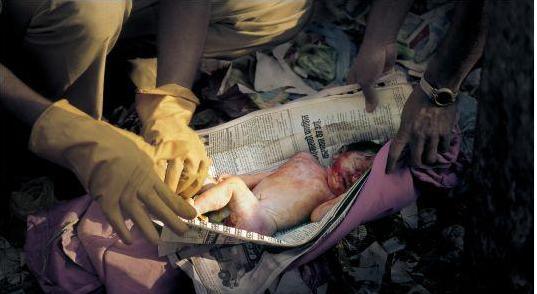Our Blog
In 2011 India released the results of its 15th Census, the previous one being carried out in 2001. To some it was just another amalgamation of numbers that explained India’s demographics, but to others it was a damning report that perplexed many as to why there are 7.1 million fewer infant girls than boys. The results of the Census in comparison to the 2001 census showed that Child Sex ratio for children aged between 0-6 is in alarming decline. The ratio which stood at 927 Females for every thousand Males has now fallen to 914 to every thousand boys; the lowest ratio since India was decolonised. What was more alarming was the fact the decline was greater in better-educated and richer household than in illiterate and poorer households.In February 2012 the UN Department of Economic and Social affairs declared that an Indian Girl between the ages of 1-5 was 75% more likely to die than a boy.
An Indian Childs Rights Organisation (CRY) stated that 12 million girls are born In India every year however one million of these girls die by the age of 1.
UNICEF, in the United Children’s Fund Report, has estimated that 50 Million Infant girls are missing in India.
 The fact that Female infanticide is still prevalent in large parts of India is not a matter of doubt. In fact it is actually rampant. A two-century-old disease that consumed regions such as Rajasthan, Eastern Pradesh and the western shores of Gujarat, and included murder in the form of poisoning, beheading, asphyxiation, and mutilation, has now become an endemic where almost two thirds of India has been involved in this orgy of sadism. But with the advent of medical technology, a new channel has been found to perpetuate this Gendercide: sex-selective abortions. A new morally bankrupt industry, now worth a 1000 crore Rupees.
The fact that Female infanticide is still prevalent in large parts of India is not a matter of doubt. In fact it is actually rampant. A two-century-old disease that consumed regions such as Rajasthan, Eastern Pradesh and the western shores of Gujarat, and included murder in the form of poisoning, beheading, asphyxiation, and mutilation, has now become an endemic where almost two thirds of India has been involved in this orgy of sadism. But with the advent of medical technology, a new channel has been found to perpetuate this Gendercide: sex-selective abortions. A new morally bankrupt industry, now worth a 1000 crore Rupees.
In May 2011 a study published on the Lancet by Academics of Toronto University showed that there have been almost 3.1 to 6 million abortions of Female fetuses in the last ten years. In Rajasthan, for example, a female fetus is aborted every 12 seconds, which is approximately 7000 cases of female feticide in a day.
The PCPNDT Act 1994 (Preconception and Prenatal Diagnostic Techniques Act) outlawed pre-natal sex determination and 11 years later, in 2005, the act was modified to make Medical Professionals culpable if found to be guilty. However authorities have poorly enforced the act. From more than 400 cases filed under the act, there have only been a total of two convictions. The punishment in the first case was a fine of 300 Rupees ($5.56) and in the second case the fine was 4000 Rupees ($74.10).
In a sting operation conducted seven years ago by two journalists, Meena Sharmaal and Shripal Shaktawat, almost 140 doctors were caught providing the abortions after conducting an ultrasound, charging some 2000 Rupees ($37.05) and then telling the mother-that-would-have-been to dump the fetus either in the cemetery or the Yamuna River. Seven years on and not one of these doctors have had their license revoked, let alone been convicted for murder.
The reason as to why it’s so poorly enforced is not solely on the basis that the Judiciary, political bodies, and enforcement agencies have been lethargic in dealing with the problem, but it is due to the fact that medical equipment such as ultrasound machines are so easily attainable. The PCPNDT Act 1994 states that anybody who has 6 months training or one year experience in sonography or image scanning can use an ultrasound machine, thereby making the problem difficult to police.
“This has led to the emergence of several bogus institutions that train people how to use ultrasound machines for sex-selection. Bogus certificates are also being issued, helping the racket to thrive” stated by the Ministry to the Times of India.
But why is the thought of bringing a baby girl into the world such a repugnant concept in parts of India?
In vast parts of India, a baby girl is seen as a product of her future husband. She will eventually leave her maiden home to go to her husband’s home. That is the purpose and essence of her existence. Of course sending her to her husband’s home does not come free. The father of the bride – prior to the wedding – is obliged to pay a substantial fee to his daughter’s husband. The fee can be paid through cash, jewellery, household goods or through the sale of land. However in a large number of cases the dowry is rarely affordable. So siring a daughter is quite simply an economic hazard.
The continuing use of these practices as well as many other social evils that are endemic across that nation has created a backlash that has brought about many positive things, one of them being Satyamev Jayate, a ground-breaking TV programme hosted by Bollywood Superstar Aamir Khan which highlights India’s many hidden truths such as: feticide; infanticide; sexual slavery; domestic abuse; alcohol abuse; honour killings; and untouchability. The show, which has drawn incredibly positive feedback, has brought a fresh-break from the bombardment of overly melodramatic family dramas which paint women as a figure of docility and an eternal servant to the male household figure. The show’s pilot episode, which was about female feticide, brought forward some harrowing stories from women who either fled from their homes or were kicked out of their house after disobeying their husband’s order to abort their baby girl. One woman, Dr Ritu Sharma, faced oppression from a well-educated family. She witnessed her mother, a former vice-principal, kick a cot – carrying her twin daughters – down the stairs. Her husband, an Orthopaedic surgeon, had pushed her down the stairs while she was 20 weeks pregnant with her twins. Fortunately she and her two daughters survived.
Due to the recent horrific gang-rape in Delhi, women’s rights have become a burgeoning issue in India at the moment. However, women’s rights start from birth and if we wish to arrest the plight of women in India then we must start with issues such as Infanticide and sex-selective Feticide. If Modern Day India is to prove that it can be a moral force in the world and that it can be a beacon of democracy for both men and women, rather than wear a veil of democracy, then it must look at itself in the mirror and stare at its ugly truths. By providing a platform for these issues on National Television, with shows such as Satyamev Jayate and Des me Na ana lado (‘Don’t come to this country, little girl’) shows that Indian society is willing to to deal with these truths head on. But India’s true test is to see how far they are willing to go to bring about these changes. Will the recent fervour created from the Delhi Rape and the furore created by Aamir Khan’s TV show fade away or could it be the spark that will render all anti-women practices obsolete? Drastic improvements in Legislation, Law Enforcement, and better access to education in rural regions of India might be the best way to continue the current momentum that has been created after the Delhi demonstrations. However in terms of challenging attitudes that are deeply entrenched in Indian culture, India faces a mountainous task. But the mountain is never too steep to make it an impossible climb.
As an Indian myself, I certainly believe that there is hope for women in India. Maybe – just maybe – in the future, when a woman becomes a bride, instead of being blessed to become the mother of a hundred sons, her well-wishers will turn around and say “May you be the mother of 50 sons and 50 daughters”.


